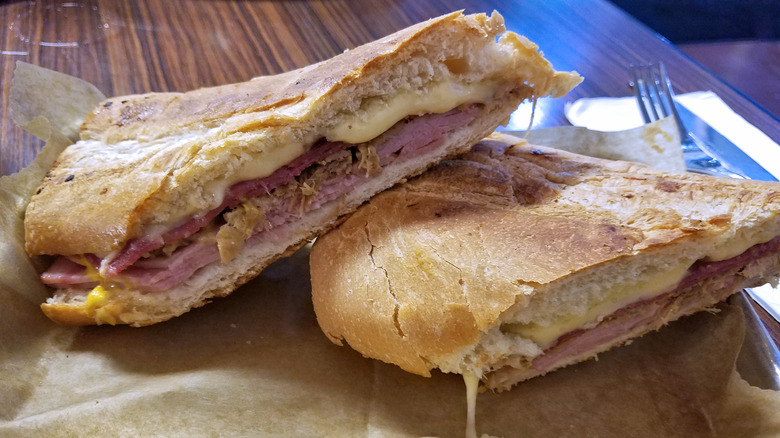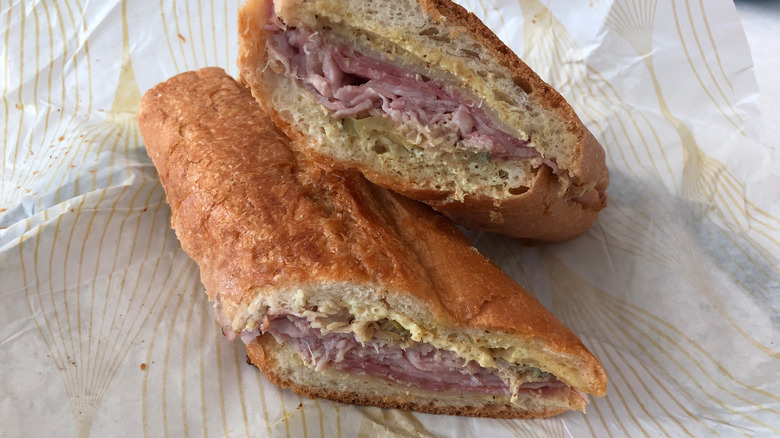Are You Putting Salami On Cuban Sandwiches? Should You?
No matter where you buy a Cuban sandwich, most of the fillings will usually be pretty similar: Roasted pork, ham, some holey Swiss cheese, pickles, and mustard are all standard. But there's one more controversial ingredient that you'll only find on some Cuban sandwiches — salami.
In short, there are two styles of Cuban sandwiches out there, Miami and Tampa, and it's generally only the Tampa version that's served with salami. And both cities are considered to be home to some of the best Cuban sandwiches in the country, so there's no immediate right or wrong answer to whether you should put salami on a Cuban.
That said, people in Miami may fiercely argue that including salami goes against tradition, with Miami's mayor even having called it a "sacrilege." Officially speaking, Tampa could be considered the originator of the Cuban sandwich in the U.S., although it's worth noting that the actual birthplace of the sandwich was Cuba, where it was called a "mixto" (referring to the mix of meats inside). Tampa is seen as its American home because the city was historically larger and home to more Cuban migrants. However, Miami is now much more populous and since the late 20th century, it's home to a much larger Cuban community than Tampa. That means the sandwich is arguably more closely associated with Miami now, giving that city ammunition for the argument that no salami is the "right" way to do it.
How salami got into the Tampa-style Cuban sandwich
If Miamians are boldly anti-salami, Tampans are vehemently in favor of it. There's a historical reason that the salami is in the Tampa version. Back when the sandwich first arrived on American shores, it featured Spanish salchichón as an ingredient, a dried and cured sausage that's vaguely similar to salami, but spicier. However, salchichón wasn't always easy to source, so salami found its way in as a replacement.
Immigration was likely a key reason for this: Tampa (particularly the neighborhood of Ybor City) was home to many immigrant workers who toiled in cigar factories, and beyond Cubans, a good chunk of these were Italians. So, with a sizable Italian community, salami (not to be confused with pepperoni) was readily available and ended up in the sandwich (as a side note, it's sometimes argued that other immigrants in this community also contributed elements, such as the mustard, coming from eastern European arrivals). There's one other difference between the Tampa and Miami sandwiches — the bread on the Tampa version is crustier, as compared to the softer Miami version which also has a thinner crust. Ultimately, there's no one "right" way to make a Cuban sandwich: since it's a regional difference, it all depends which variety of the sandwich you're trying to emulate — although whichever side you choose, you may annoy Miami or Tampa residents in the process.

